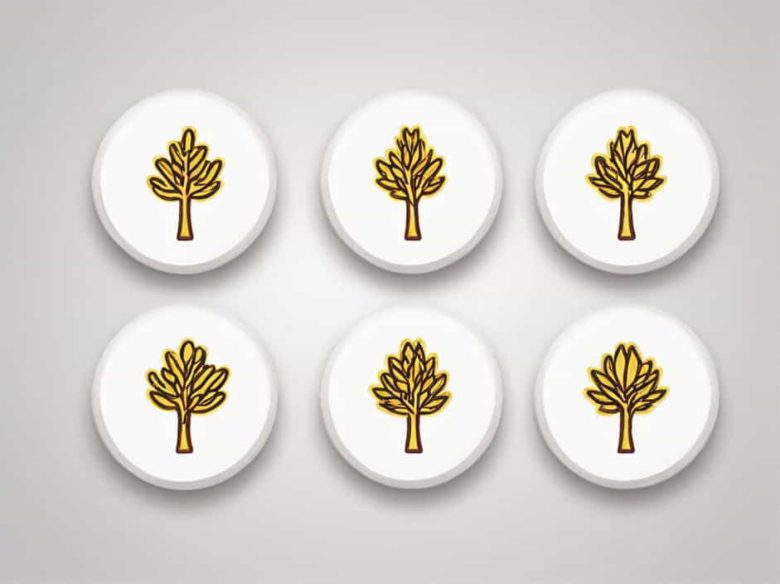Dicotyledonous seeds commonly known as dicot seeds come from plants that produce two seed leaves (cotyledons) upon germination. Many of these seeds are an essential part of human diets and are widely used in cooking. They provide valuable nutrients including protein fiber and healthy fats.
This topic explores various dicotyledonous seeds used in cooking their health benefits and how they are commonly prepared in different cuisines.
What Are Dicotyledonous Seeds?
Dicotyledonous seeds belong to plants classified as dicots which have the following characteristics:
- Two cotyledons (seed leaves).
- Branched veins in leaves.
- Taproot system for deep soil penetration.
- Flowers with petals in multiples of four or five.
Many dicot seeds are used as food sources including legumes nuts and oilseeds.
Types of Dicotyledonous Seeds Used in Cooking
1. Leguminous Seeds
Legumes are among the most widely consumed dicot seeds. They are rich in protein and fiber making them a staple in vegetarian and non-vegetarian diets alike.
a) Beans
- Kidney Beans (Phaseolus vulgaris) – Used in chili stews and salads.
- Black Beans (Phaseolus vulgaris) – Popular in Latin American and Caribbean cuisine.
- Pinto Beans (Phaseolus vulgaris) – Commonly used in Mexican dishes like refried beans.
b) Lentils (Lens culinaris)
Lentils are small lens-shaped seeds available in various colors such as red green and black. They cook quickly and are used in soups curries and salads.
c) Chickpeas (Cicer arietinum)
Also known as garbanzo beans chickpeas are used in making hummus chana masala and falafel. They are high in protein and fiber.
d) Peas (Pisum sativum)
Green peas and split peas are widely used in soups stews and side dishes. They are nutrient-dense and provide essential vitamins.
2. Nuts Used in Cooking
Nuts are dicot seeds packed with healthy fats vitamins and minerals. They are used in both savory and sweet dishes.
a) Almonds (Prunus dulcis)
Almonds are eaten raw roasted or used in baking desserts and milk alternatives. Almond flour is a popular gluten-free ingredient.
b) Walnuts (Juglans regia)
Walnuts have a rich earthy flavor and are often added to salads baked goods and sauces. They are high in omega-3 fatty acids.
c) Cashews (Anacardium occidentale)
Cashews are commonly used in creamy sauces stir-fries and vegan cheese alternatives.
d) Pecans (Carya illinoinensis)
Pecans are a key ingredient in pecan pie nut butters and granola.
3. Oilseeds for Cooking and Seasoning
Certain dicot seeds are processed to extract oils or used directly in cooking for their flavor and nutritional benefits.
a) Mustard Seeds (Brassica juncea)
Mustard seeds are used in spice blends pickles and sauces. They are also pressed to make mustard oil.
b) Sesame Seeds (Sesamum indicum)
Sesame seeds are used in baking salads and Asian cuisine. Tahini a paste made from sesame seeds is a key ingredient in hummus.
c) Sunflower Seeds (Helianthus annuus)
Sunflower seeds are eaten as snacks added to salads or used to extract sunflower oil for cooking.
d) Flaxseeds (Linum usitatissimum)
Flaxseeds are known for their high omega-3 content. They are often ground and added to smoothies oatmeal and baked goods.
4. Spice Seeds Used in Cooking
Several dicot seeds are used as spices to enhance flavors in dishes.
a) Cumin Seeds (Cuminum cyminum)
Cumin has a warm earthy flavor and is commonly used in Indian Mexican and Middle Eastern cuisines.
b) Coriander Seeds (Coriandrum sativum)
Coriander seeds are used whole or ground in curries soups and spice blends.
c) Fenugreek Seeds (Trigonella foenum-graecum)
Fenugreek seeds are slightly bitter and are used in Indian cooking especially in spice mixes and curries.
Health Benefits of Dicotyledonous Seeds
1. Rich in Protein
Legumes like beans lentils and chickpeas provide high-quality plant protein making them an excellent choice for vegetarians and vegans.
2. High in Fiber
Most dicot seeds contain dietary fiber which aids digestion helps regulate blood sugar levels and promotes heart health.
3. Packed with Healthy Fats
Nuts and seeds provide essential fatty acids which support brain function and cardiovascular health.
4. Loaded with Antioxidants
Many seeds and nuts such as walnuts and flaxseeds contain antioxidants that protect cells from damage.
5. Support Heart Health
Seeds rich in omega-3 fatty acids like flaxseeds and walnuts help reduce inflammation and lower cholesterol levels.
How to Use Dicotyledonous Seeds in Cooking
1. Boiling and Soaking
Legumes like beans and lentils should be soaked before cooking to reduce cooking time and improve digestibility.
2. Roasting
Nuts and seeds can be dry-roasted to enhance their flavor and crunch.
3. Grinding into Flours
Almonds and flaxseeds are often ground into flour for gluten-free baking.
4. Adding to Salads and Smoothies
Sunflower seeds sesame seeds and nuts can be sprinkled on salads or blended into smoothies for extra nutrition.
5. Using in Sauces and Dips
Tahini (sesame paste) and nut butters are commonly used in dressings sauces and dips.
Dicotyledonous seeds are an essential part of the human diet providing a rich source of nutrients and versatility in cooking. From legumes and nuts to oilseeds and spices these seeds offer numerous health benefits while enhancing the flavors of various dishes. By incorporating a variety of dicot seeds into your meals you can enjoy their nutritional benefits while exploring different cuisines and cooking styles.



